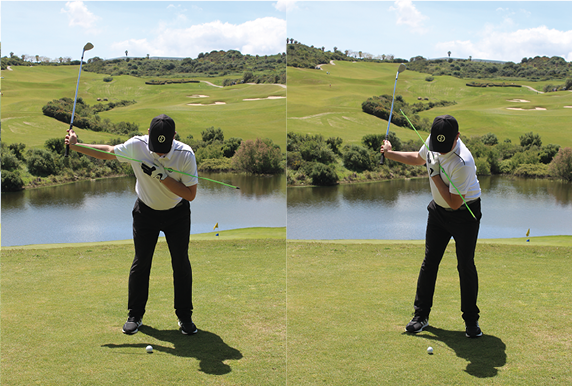David Gil was 19 when, in 1998, he started working as a golf professional in Almenara (Sotogrande), creating the first CAR academy in Andalucía. He subsequently travelled to England where he worked at the David Leadbetter Academy. On his return, he created the Sotogrande Junior Golf School, where players who went on to become top professionals have been coached.
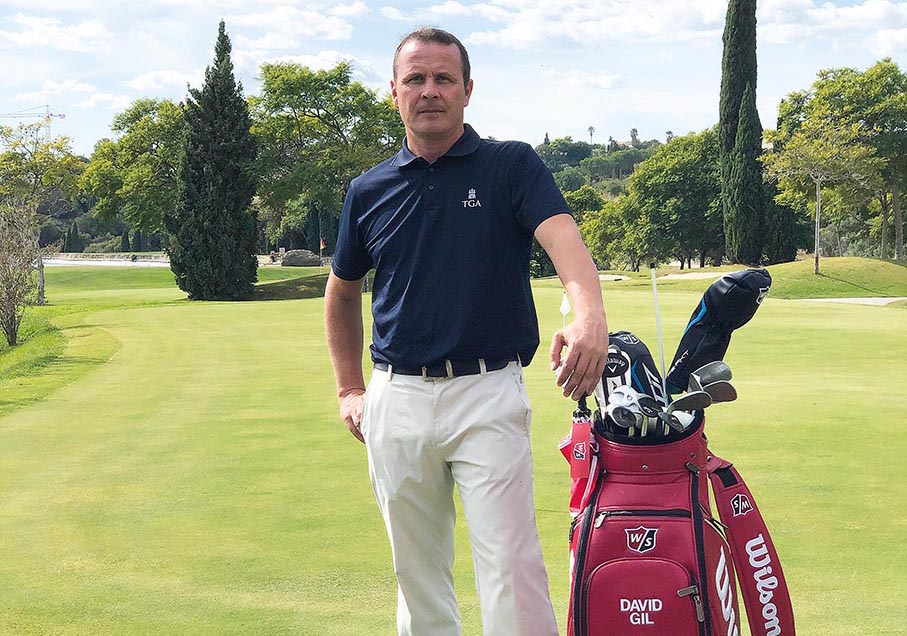
Always linked to education, in 2010 he became involved in an international project in Sicily, where he was closely associated with Italy’s national teams and coaches.
With a masters degree in management and golf course management, David worked in golf operations for Andalucía’s leading courses. In 2018 he joined “TGA Golf Academy by Michael Campbell”. In summer 2021, he created his own golf academy, DG Golf Academy, based in Marbella and Switzerland.
The Most Common Mistakes with the Short Game – and How to Correct Them
It might seem that the easiest shots golfers face are those closest to the target, but this is certainly not the case. I always aim to maintain good communication with my students and, whenever I can, I inquire about the dates of their tournaments so I can ask them how they did after each event.
In most cases I am told that, in general, their long game has gone well, but their short game has been the reason why results are sometimes not what they expected.
In this issue we will look into what are the most common mistakes for shots between 50 and 100 metres, and explain how to correct them.
.
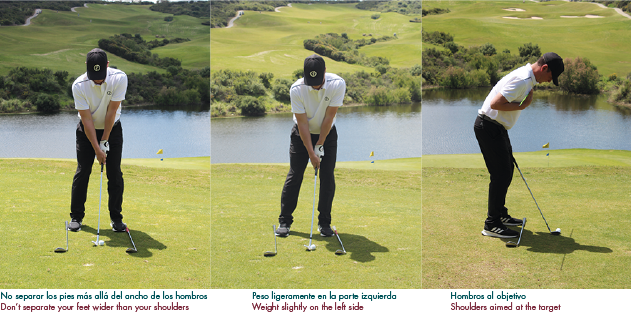
1. Create a Good Stance
Shots over this distance can create confusion when standing over the ball, as they are not long shots (this is one of the most common mistakes).
Therefore, the stance needs to be different from that for long shots with the irons.
These are the three important points to keep in mind for this stance:
- Do not separate your feet beyond the width of your shoulders.
- Keep the weight slightly on the left side.
- Maintain the line of your shoulders to the target without adopting a crossed-over stance.
.
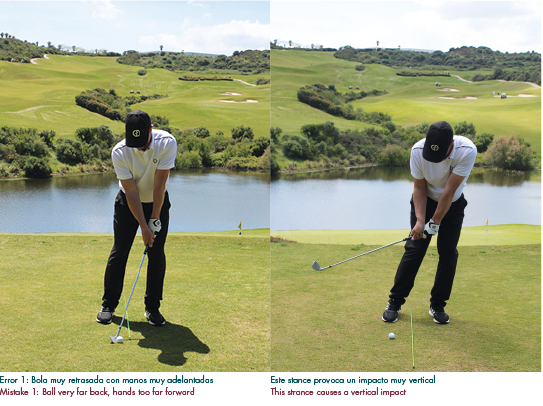
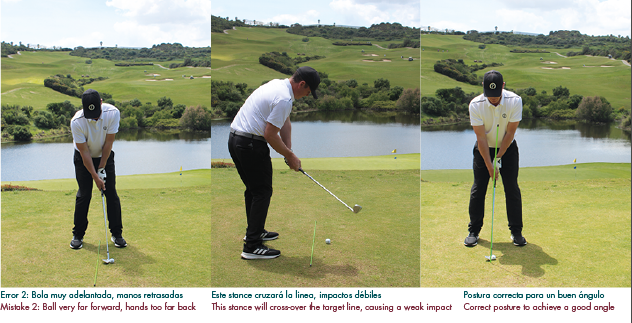
2. Angle of Impact
This is an important point, as the angle will determine the quality of your shot.
Lately I have been working a lot on this aspect with low-handicap players because, when you are looking for consistency in your turn, you need to ensure precision with the shot. Creating similar angles helps you hit more consistently, as ball flight and distance tend to be similar to each other.
The most common mistake is trying to modify the club’s characteristics and design, thereby changing the angle of impact.
To generate the correct angle of impact, you should stick with the club’s existing characteristics and bounce, without modifying its design.
You centre your hands and the ball with your chest and, with your weight slightly to the left, make the club bounce off the ground (always touching it) but without it becoming stuck.
.
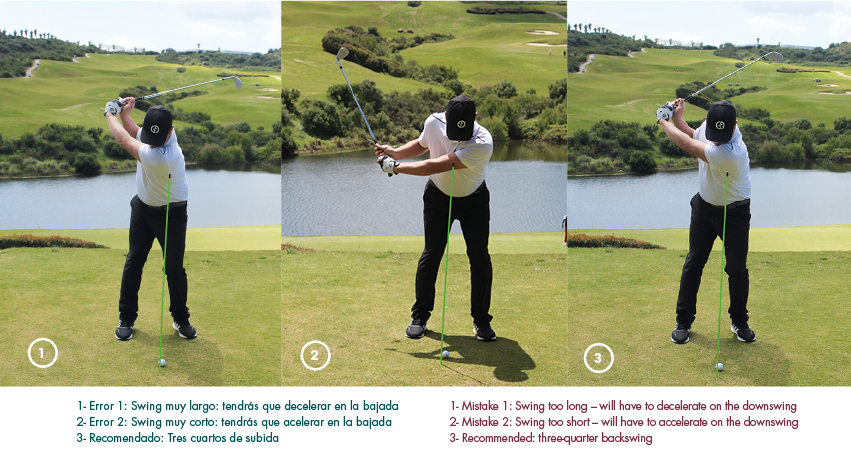
3. Speed and Length of Swing
Action-Reaction – within a golf swing there is a lot of technique and plenty of psychology. It is true that when you face shots with hazards between your ball and the target, the psychological factor can sometimes play tricks on you. For that reason you have to keep in mind that your swing should not be too long, as this increases your margin of error.
The most common mistakes are:
- A) Long backswing – decelerating on the way down.
- B) Very short backswing – accelerating during the descent.
Both mistakes create inconsistency.
How to Create Good Speed with the Right Swing Arc
Today there are many wedges on the market with a wide variety of degrees. I recommend that you have a difference of four degrees between one and the other, then try to do what I call a “compensated swing”, which means that the club during the backswing and at the final point of the downswing ends at the same height from the ground.
It never helps to force very open clubs (58-60-62 degrees) for these types of shots in normal circumstances because, as I have mentioned before, the margin of error in creating a long swing is much greater and these clubs are not designed for that.
The speed has to be constant without sudden changes, enabling you to control distances better and be able to hit these shots with greater confidence and more positive results.
.
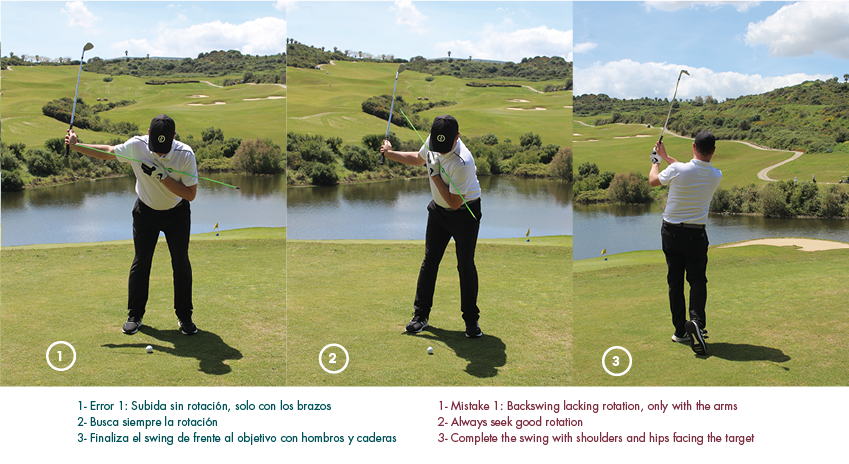
4. Rotation without Blocking
This is a medium stroke and, as I noted before, that can lead to confusion. Many players who achieve good spin on long shots, when faced with shots from 50 to 100 metres, find that remaining blocked at the top part of the shot can help them achieve greater accuracy.
Most common mistakes:
- A) Upper body blocked.
- B) Try to use – or punch this shot with – the arms only.
How to Create Good Rotation
In previous issues I have explained that a turn of the shoulders and hips has to exist for you to achieve a good swing. With short clubs, the back needs to be slightly more inclined. The knees will remain bent during the backswing and then you have to complete the shot with your hips facing the target and your shoulders aimed slightly towards the sky.



